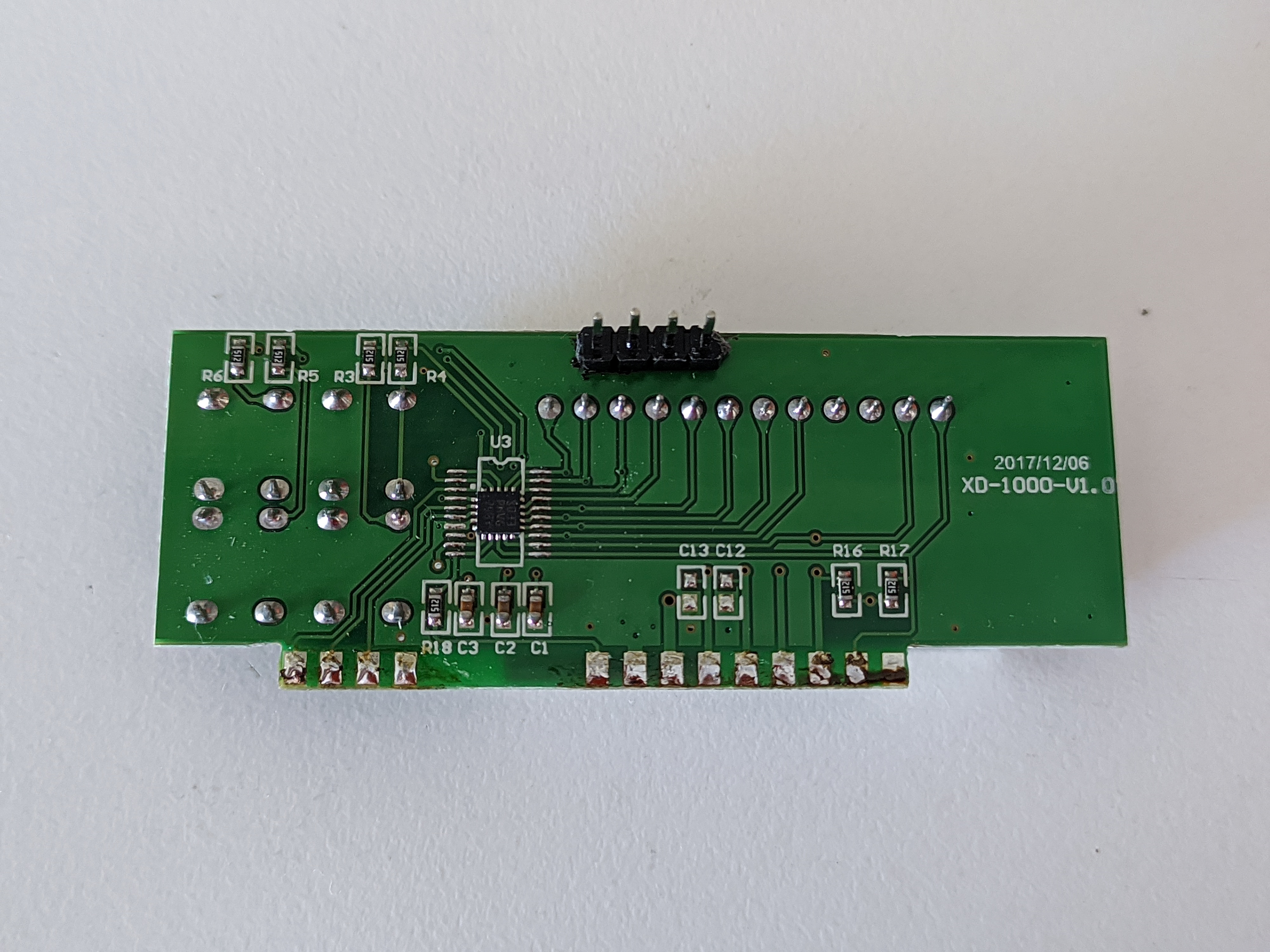I checked the datasheets of both packages and they look the same. Interesting way of combining these 2 packages, I have not seen it before. The NTC1 and NTC2 readings go to pin 20 (NTC1, AIN4/PD3) and pin 19 (NTC2, AIN3/PD2). This is the same as on the QFPN package. Can you check if the voltages show up at pin 19 and pin 20 when you connect the sensor inputs to GND and VCC? That should be 0V and 3.3V respectively (leave the sensors off). Since these temperaturesensors are multiplexed with the A and B leds of the display, can you check if the display is really Common-Cathode (CC)? If it is common-anode, this could be the cause of the problem.
I've got this STC-1000 that has the same box as emile (like the WR-032-v1), but has a different PCB name. This one is the XD-1000-v1.0. The backplane looks to be pretty similar to the WR-032 v2 board . The only difference that i was able to find is that this version (compared to the WR-032-v1) uses the UFQFPN20 package of the STM8S003F3, while also having the pads and silkscreen for the TSSOP20 version of the same chip. I'll add some photos of the front-pcb and the power pcb. The problem i'm experimenting is that temperatures do not get read properly, in the sense that both numbers (NTC1 and NTC2) start at 25cº, but the NTC1 starts to raise up and the NTC2 starts to go down, until they stabilize at 40cº and 1cº respectively. I only plan to use this STC with one temperature probe, and no SSR or any extra mod. I've tried using IAR to reduce or even disable the number of averaged measurments, but it seems to have no change at all. What else can i try to fix this problem??


